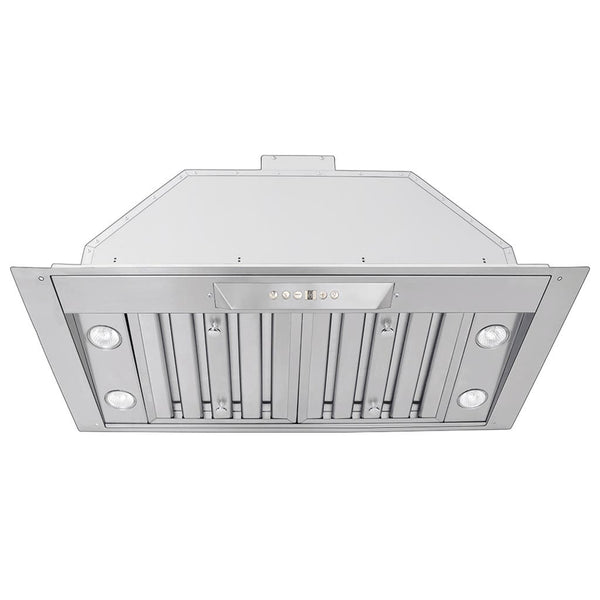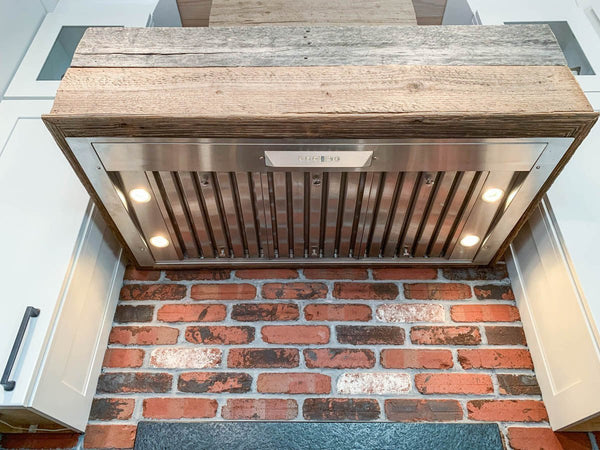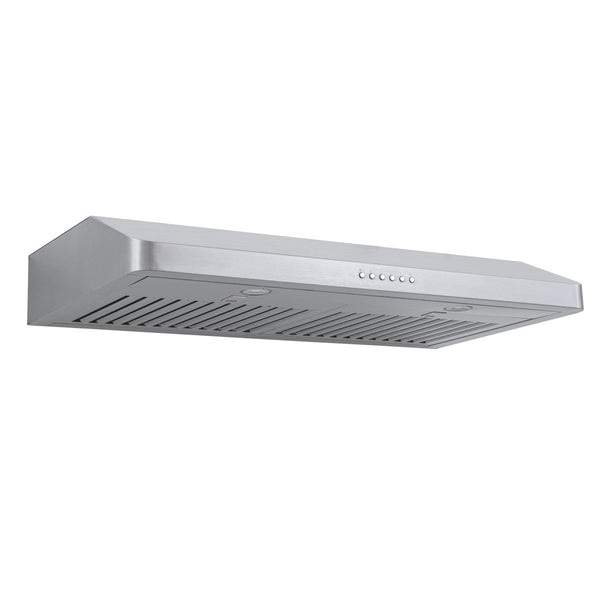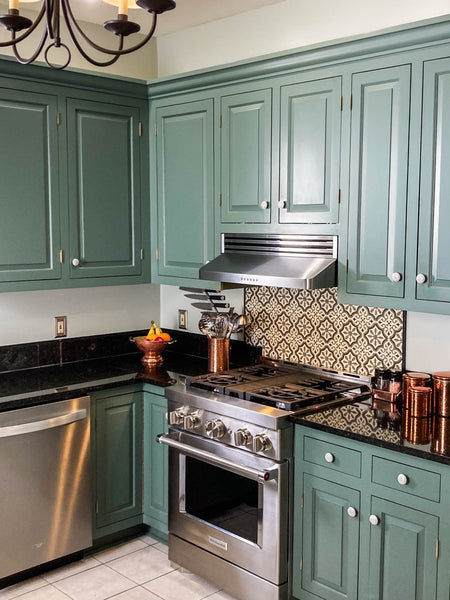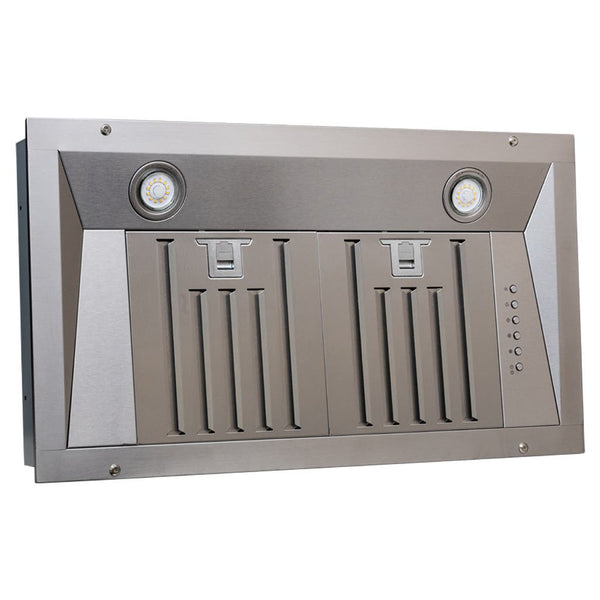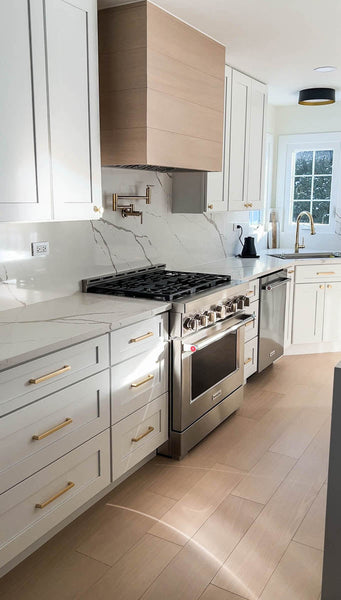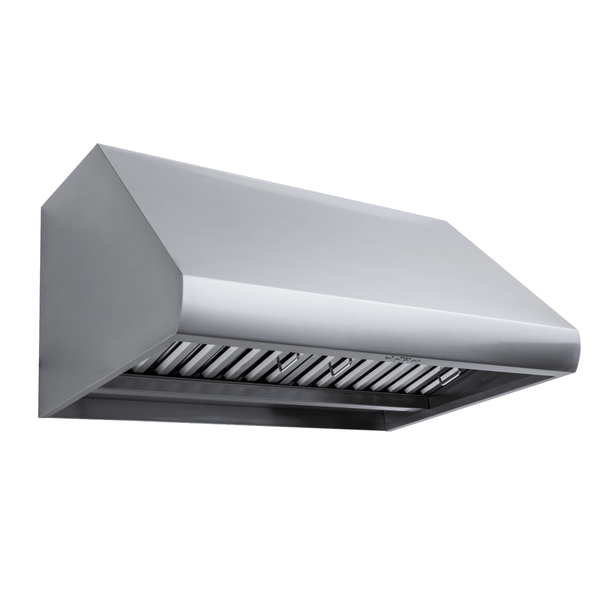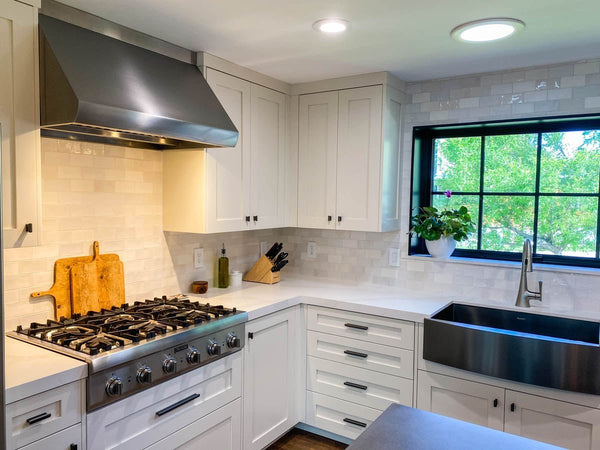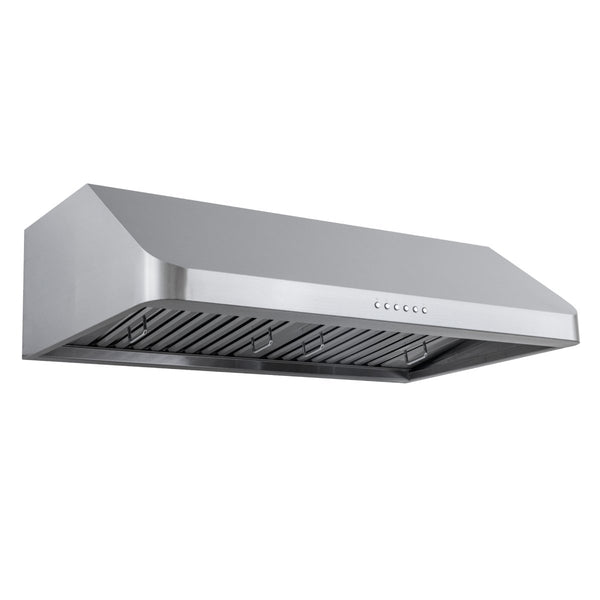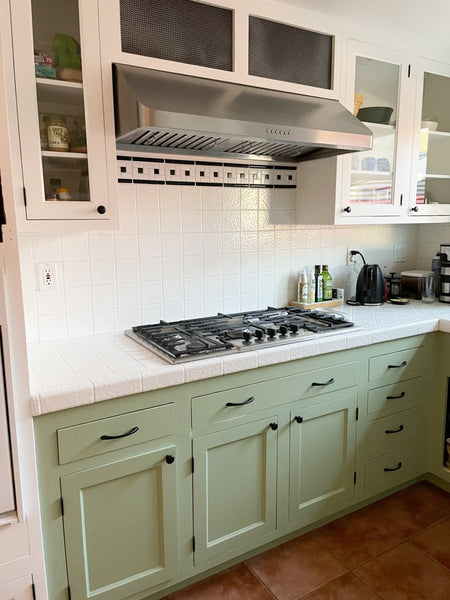Table of Contents
If you're in the market for a new kitchen range, you may be wondering if buying a range hood is worth the time and money. A range hood is an essential kitchen appliance that helps to remove smoke, grease, and cooking odors from your kitchen. It also helps to improve indoor air quality and prevent the buildup of harmful pollutants in your home.
While range hoods can be a significant investment, they are worth the time and money for many homeowners.
Let's explore the benefits of range hoods and help you determine if purchasing one is the right choice for your kitchen.
We'll also provide some tips for choosing the best range hoods for your needs and budget.
Benefits of a Range Hood
Whether you're a professional chef or a home cook, a quality range hood can make a significant difference in your cooking experience.
Are range hoods worth it?
Not only does it help to keep your kitchen clean and fresh, but it also helps to protect your health by removing harmful pollutants and carbon monoxide from the air. So, let's dive in and explore the world of range hoods to determine if they are worth the investment.
Improved Air Quality
One of the biggest benefits of having a range hood is the improved air quality in your kitchen. Range hoods are designed to remove smoke, fumes, airborne grease, and other pollutants that are released when cooking on your gas stove, electric stove, or gas cooktop.
Without proper ventilation, these pollutants can linger in your cooking space and affect the kitchen air quality throughout your home.
Range hoods work by sucking up the polluted air and venting it outside through ductwork or filtering it before recirculating it back into your kitchen. Ducted range hoods provide superior airflow by venting directly outside through an exterior wall or roof, while ductless range hood options use charcoal filters to clean the air.
This process helps to remove harmful pollutants, grease particles, and improve the air quality in your home, creating a healthier cooking environment.
Reduced Moisture and Heat
Cooking can generate a lot of heat and moisture, which can make your kitchen feel uncomfortable and even damage your walls and kitchen cabinets over time. Range hoods help to reduce the amount of moisture and heat in your cooking area by venting it outside or filtering it before recirculating it back into your kitchen.
This is especially important when cooking at high heat on gas ranges or induction cooktops, which can produce significant amounts of steam and heat.
This can help to keep your kitchen cooler and drier, making it more comfortable to cook in and reducing the risk of damage to your walls and cabinets.
Elimination of Cooking Odors
Cooking can also generate a lot of strong and unpleasant cooking smells, which can linger in your kitchen and even spread throughout your living room and other areas of your home.
Range hoods help to eliminate cooking odors by venting them outside through a vented range hood or filtering them through a recirculating range hood before recirculating them back into your kitchen.
This can help to keep your kitchen smelling fresh and clean, and prevent cooking odors from spreading throughout your home. This is particularly valuable for homebuyers viewing your property or when entertaining guests—no one wants lingering cooking smells throughout their new house.
Overall, the benefits of a range hood are clear.
They help to improve the air quality in your home, reduce moisture and heat, and eliminate cooking odors. If you're considering buying a range hood, it's definitely worth the time and money to invest in one.
Factors to Consider
Your Cooktop or Range
It is recommended that you have at least 100 CFM per 10,000 BTUs of your stovetop or cooking surface. For instance, a 100,000 BTU gas stove requires at least a 1000 CFM range hood. The CFM range you need depends on your cooking habits and the type of appliance—gas stoves typically require more powerful exhaust systems than electric stoves or induction cooktops.
Consider whether you have a standard range, wall ovens, or a gas cooktop when determining your ventilation needs.
Kitchen Size and Layout
The size and kitchen layout are important factors to consider when buying a kitchen range hood. A larger kitchen may require a more powerful hood with higher fan speeds to effectively remove smoke and odors, while a smaller kitchen may only need a basic model.
Additionally, the layout of your kitchen may impact the type of hood you need and available venting options.
For example, if your range is located on a kitchen island, ceiling mounted range hoods or island hoods may be the best option. In apartment buildings, you may be limited to ductless models due to building restrictions.
Cooking Frequency and Style
Consider how often you cook and the type of food you typically prepare. If you cook frequently and often use high heat, a more powerful vented hood may be necessary to remove smoke and odors effectively and prevent smoke alarms from triggering.
Additionally, if you frequently cook with strong spices or oils, a hood with a higher CFM (cubic feet per minute) rating may be necessary to effectively remove these odors and maintain clean air in your cooking space. Your cooking needs directly impact which range hood models will work best for you.
Budget and Cost
Budget is another important factor to consider when purchasing a range hood. Hoods can range in price from a few hundred dollars to several thousand dollars for custom hood designs or stainless steel range hoods. Consider what features are important to you and what you can afford.
Additionally, keep in mind the cost of installation and any necessary ductwork for ducted hood installations. First time buyers should also factor in potential costs for electrical work if upgrading from a range microwave to a proper hood vent.
Types of Range Hoods

Under-Cabinet Range Hoods
Under-cabinet range hoods, also called cabinet range hood or cabinet hood models, are the most popular type of range hood, and for good reason. They are typically installed underneath a cabinet above the cooking surface, making them a space-saving option that doesn't sacrifice counter space.
These range hoods come in a variety of styles and range hood sizes and can be vented or non-vented. Vented range hoods remove smoke, steam, and cooking odors from the kitchen, while ductless hood models recirculate the air back into the kitchen after filtering it.
When shopping for an under-cabinet range hood, consider the size of your range and the amount of cooking you do.
Look for a range hood at least as wide as your range and preferably a few inches wider. This will ensure that the range hood can effectively capture smoke and steam from your cooking surface.

Wall-Mount Range Hoods
Wall-mount range hoods (also known as wall mount range hood models) are installed on the wall above the cooking surface and are often used in kitchens with a cooktop or range not located under a cabinet.
These range hoods come in various styles, hood types, and sizes and can be vented or non-vented. Many wall mount designs serve as a striking focal point in kitchen design, especially when featuring stainless steel range hoods or custom hood finishes.
When shopping for a wall-mount range hood, consider the size of your range and the amount of cooking you do.
Look for a range hood at least as wide as your range and preferably a few inches wider. This will ensure the range hood can effectively capture smoke and steam from your cooking surface.

Island Range Hoods
Island range hoods are designed for use over a cooktop or range on an island in the kitchen. These range hoods are typically mounted to the ceiling and come in various styles and sizes. Island hoods can be vented or non-vented, and can be ducted to the outside or recirculate the air back into the kitchen after filtering it.
When shopping for an island range hood, consider the size of your range and the amount of cooking you do.
Look for a range hood that is at least as wide as your range, and preferably a few inches wider. This will ensure that the range hood can effectively capture smoke and steam from your cooking surface. Island range hoods often require more powerful motors due to their ceiling-mounted position and longer duct run requirements.
Installation and Maintenance
DIY vs. Professional Installation
When it comes to installing a range hood, you have two options: DIY or professional installation. DIY installation can save you money, but it can also be time-consuming and potentially dangerous if you're not experienced with electrical work. Professional installation can be more expensive, but it ensures that your new range hood is installed correctly and safely.
If you're considering DIY installation for the first time, make sure to carefully read the manufacturer's instructions and consult with an electrician if needed. Proper installation is critical for safety and performance—improper venting can create fire hazards and affect how your range hood works.
If you're not comfortable with electrical work, it's best to hire a professional. Many homeimprovement projects benefit from professional expertise, especially when dealing with complex ductwork or convertible range hood installations.
Maintenance and Cleaning Tips
Maintaining and cleaning your range hood is important to ensure it continues to function properly and efficiently. Here are some tips:
- Clean the filters regularly. Depending on the type of filter, you may need to wash or replace them every one to three months. Charcoal filters in ductless models need replacing more frequently than baffle filters in ducted models.
- Wipe down the exterior of the hood with a damp cloth and mild detergent as needed.
- Check the fan blades and exhaust fan for any buildup of grease or debris and clean them as necessary.
- Inspect the ductwork for any blockages or damage and clean or repair as needed. A blocked duct run can significantly reduce performance.
- Replace lightbulbs as needed to maintain proper lighting over your cooking area.
- Monitor noise level—if your hood becomes unusually loud, it may need cleaning or maintenance.
Regular maintenance and cleaning can also help extend the lifespan of your range hood and prevent costly repairs down the road.
We have a massive guide on cleaning your hood here. And another guide to maintaining your hood and protecting your range hood investment here.
Are Range Hoods Worth It?
After considering all the factors, it is clear that buying a range hood is worth the time and money.
A range hood provides many benefits, including improved air quality, reduced cooking odors, and increased safety in the kitchen by removing much air containing harmful pollutants and carbon monoxide from gas stoves. A proper kitchen ventilation system is essential for protecting both your health and your home.
Additionally, a range hood can add value to your home and enhance the overall aesthetic of your kitchen design, serving as both a functional appliance and a design element. Whether you choose ceiling mounted range hoods, wall mount options, or under-cabinet models, the right hood fans will improve your entire cooking process.
Different types of hoods serve different purposes—from ductless models perfect for apartment buildings to powerful ducted systems ideal for serious home chefs. Kitchen vents come in various hood types to suit every venting system need and kitchen layout.
By selecting the right range hood for your cooking needs, you can enjoy these benefits and more for years to come:
